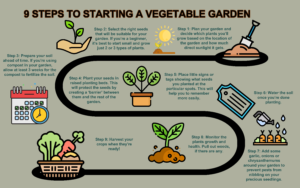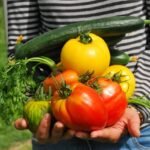Starting a vegetable garden can be an enriching experience, bringing fresh produce to your table and a sense of achievement to your day. If you’re looking to dive into the world of homegrown food, here’s a comprehensive guide to help you grow a bountiful garden, even if you’ve never so much as planted a seed before.

Step 1: Garden Planning 101
The journey of a thousand salads begins with a single plan. Choosing the right location for your garden is critical. Look for a spot that receives ample sunlight since most vegetables need about 6 to 8 hours of direct light each day. Consider the proximity to a water source and the quality of the soil in your chosen area.
Step 2: Seed Selection
Your seeds are the foundation of your garden. Research which plants thrive in your region and align with your culinary preferences. Starting with 2 or 3 plant types is advisable to avoid overwhelming yourself. Think about starting with hardy vegetables like lettuce, radishes, or cherry tomatoes, which are forgiving and suitable for beginners.
Step 3: Soil Preparation
Soil is more than just dirt; it’s a living ecosystem. Preparing your soil with compost enriches it with nutrients essential for plant growth. Aim to mix in the compost about 3 weeks before you plan to plant, giving the soil ecosystem time to adjust.
Step 4: Raised Beds
Consider raised planting beds to offer better drainage, reduce weed problems, and ease the strain on your back when planting and harvesting. They also help protect your seedlings from some pests and create a tidy, organized garden space.
Step 5: Labeling
As your seeds go into the ground, label them. This not only helps you remember what you planted where but also allows you to track their progress and learn from the growing process. You can use popsicle sticks, stones, or store-bought garden markers—anything that withstands the elements.
Step 6: Watering Wisdom
Water is a vital ingredient for your garden, but balance is key. Water your garden thoroughly after planting and maintain consistent moisture levels as your plants grow. Avoid over-watering, which can drown roots and diminish oxygen in the soil.
Step 7: Natural Pest Control
Protect your young garden by planting natural repellents. Garlic, onions, and chrysanthemums can deter pests while adding more variety to your harvest. They act as natural pest control, reducing the need for chemical pesticides.
Step 8: Garden Vigilance
Monitoring your garden for plant health and growth is essential. Regularly check for and remove weeds, which compete with your veggies for nutrients and sunlight. Also, be on the lookout for signs of pests or diseases, and take action early to prevent spreading.
Step 9: Harvest Time
The most rewarding step is harvesting. Vegetables taste best when they are picked at the peak of their ripeness. Some plants, like lettuce and herbs, can be harvested continuously. Learn the signs of ripeness like color, size, and firmness for each type of vegetable you grow.
Conclusion
Gardening is a cyclical process, each step leading naturally to the next. From planning to planting, watering to weeding, each action you take in the garden is a step towards a healthier lifestyle. It’s not just about the produce you harvest but also about the lessons learned and the satisfaction gained from growing your own food.
Embrace the journey, and before you know it, you’ll be enjoying the fruits (and vegetables) of your labor. Remember, every gardener has to start somewhere, and with these nine steps, you’re well on your way to cultivating a green thumb and a greener life.
- The One Skill That Could Save Your Family in a Crisis!
- Turn 1 Week of Harvest Into 6 Months of Food!
- Backyard Chickens: The Secret to Never Buying Eggs Again!
- Save Thousands with This Simple Backyard Water Hack!
- 7 Crops That Practically Grow Themselves (and Feed You Nonstop!)
- This Dirt Trick Could Feed Your Family Forever!
- You Won’t Believe How Much Food Fits in a Tiny Backyard!
- Cultivating Your Greens: A Beginner’s Guide to Starting a Vegetable Garden
- The Green Pharmacy: Cultivating Wellness in Your Backyard

Leave a Reply